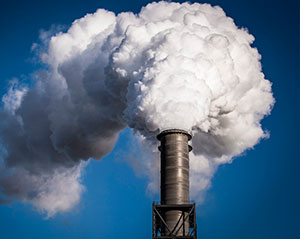Total final energy consumption
Final consumption measures the needs for energy of final consumers, excluding inputs and losses involved in the energy transformation sectors.
Total primary energy consumption
Primary consumption measures the total energy consumption of a country, including all losses and own consumption within transformation process.
Share of electricity in final consumption
This corresponds to the ratio between the final consumption of electricity and the total final consumption of energy, excluding inputs and losses involved in the energy transformation sectors.
Share of fossil fuels in primary energy consumption
This corresponds to the ratio between the primary energy consumption of fossil fuels (coal, oil and gas) and the total primary consumption.
Final electricity consumption
Final electricity consumption measures the needs of final consumers for electricity, excluding inputs and losses involved in the energy transformation sectors.
Total electrical capacity
Installed capacity: from private and public utilities and autoproducers. Include cogeneration and fuel cells.
Total electricity generation
Electricity generation: includes the gross electricity generation from private and public utilities and autoproducers. It includes cogeneration and fuel cells.
Share of renewables in primary energy consumption
The ratio between primary consumption of renewable energy sources, either as transformation input or in final demand sectors, on the total primary energy demand.
Share of renewables in final energy consumption
This corresponds to the ratio between the final energy consumption of renewables and the total final consumption of energy, excluding inputs and losses involved in the energy transformation sectors.
Share of renewables in electricity generation
Share of renewables in electricity generation corresponds to the ratio between the electricity generated from renewable energy sources (wind, solar, large and small hydro, biomass, geothermal or others) and total electricity generation. It is expressed as a percentage (%).
Total CO2 emissions (incl. industrial processes)
CO2 emissions are anthropogenic emissions from the combustion of fossil fuels and industrial processes. CO2 emissions from the agriculture sector, land use, land use change, forestry and animal husbandry are not included. Biomass combustion is considered to be carbon-neutral.
CO2 intensity of electricity generation
CO2 intensity of electricity generation represents the amount of anthropogenic CO2 emissions associated to the generation of one kilowatt-hour of electricity. It is expressed in gram of CO2 per kilowatt-hour (gCO2/kWh).
CO2 intensity to GDP
CO2 intensity to GDP corresponds to the amount of anthropogenic CO2 emissions from fossil fuels combustion associated to the generation of one unit of Gross Domestic Product (GDP). This indicator is measured in constant dollars at purchasing power parity (kgCO2/US$15ppp).
CO2 intensity per capita
CO2 intensity per capita measures the total anthropogenic CO2 emissions from fossil fuels combustion per head of population. This indicator is expressed in ton of CO2 per capita (tCO2/cap).
EnerFuture provides energy projections up to 2050. Our service offers clear insight into the future of energy demand, prices and GHG emissions.
More informationEnerdata's long-term MACC allow you to gain unique insight and comprehensive data from the globally recognised POLES model.
More information02
May
The Philippines’ Department of Energy (DOE) expects that nearly 4.2 GW of new power projects to be commissioned in 2024, mixing renewables and conventional sources. This includes the start of commercial operation of a record solar power capacity of nearly 2 GW (1,985 MW) that should be commissioned in 2024, and two large thermal power plants, namely the 1,320 MW (4x440 MW) Batangas CCGT power project and the 600 MW (4x150 MW) Mariveles coal-fired power project (unit 1 already operational and 3 other units under testing and commissioning). In addition, at least 590 MW of battery energy storage should be commissioned during the year.
30
Apr
The Russian Ministry of Economic Development has confirmed the official forecasts for gas production in Russia for the 2024-2027 period. Gas production in the country should reach 666.7 bcm in 2024, 695.4 bcm in 2025, 707.5 bcm in 2026 and 727.3 bcm in 2027. The ministry has also unveiled a conservative forecast alongside the baseline one, with production reaching 654 bcm in 2024 and potentially standing at 659 bcm for 2025, 666 bcm in 2026 and 671 bcm for 2027.
25
Apr
The Russian Ministry of Economic Development has lowered its forecasts for the country's crude oil export prices over the 2024-2027 period to US$65/bbl. The forecasts were cut from previous estimates of US$71.3/bbl for 2024, US$70.1/bbl for 2025 and US$70/bbl for 2026.
22
Apr
The European Union Agency for the Cooperation of Energy Regulators (ACER) has published its European LNG Market Monitoring Report (MMR). According to the report, the EU outpaced China as the largest global LNG importer in 2023, with 134 bcm of LNG imports recorded, while the United States have surpassed Qatar and Australia as the largest LNG producer, with an estimated export volume of 119 bcm in 2023. The EU’s increased demand of LNG may reach its peak during 2024 under ‘REPowerEU’ demand scenarios, at 330 bcm.



